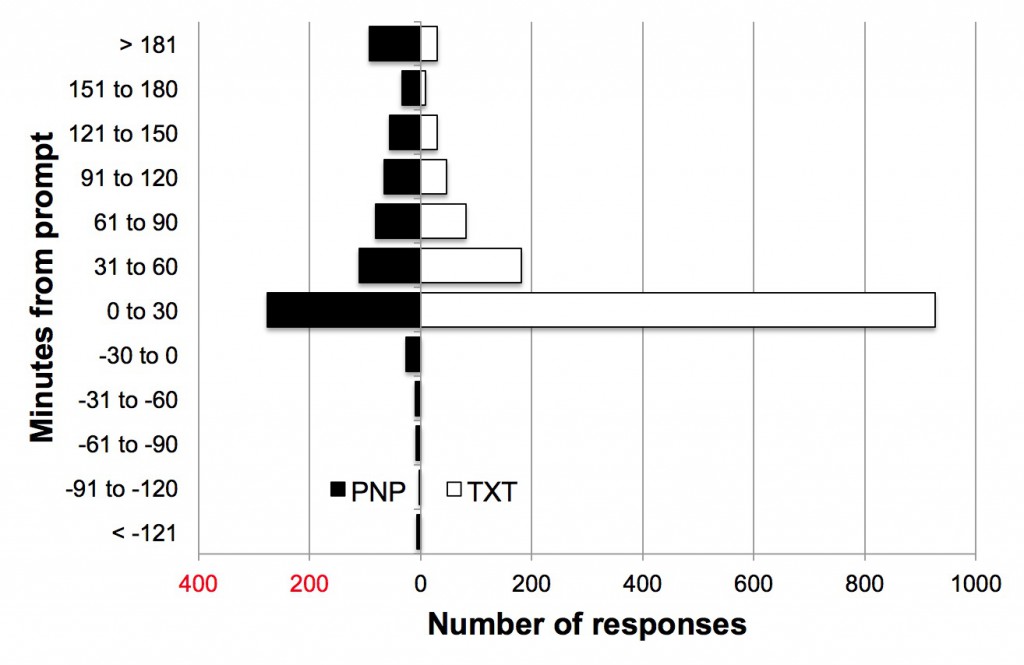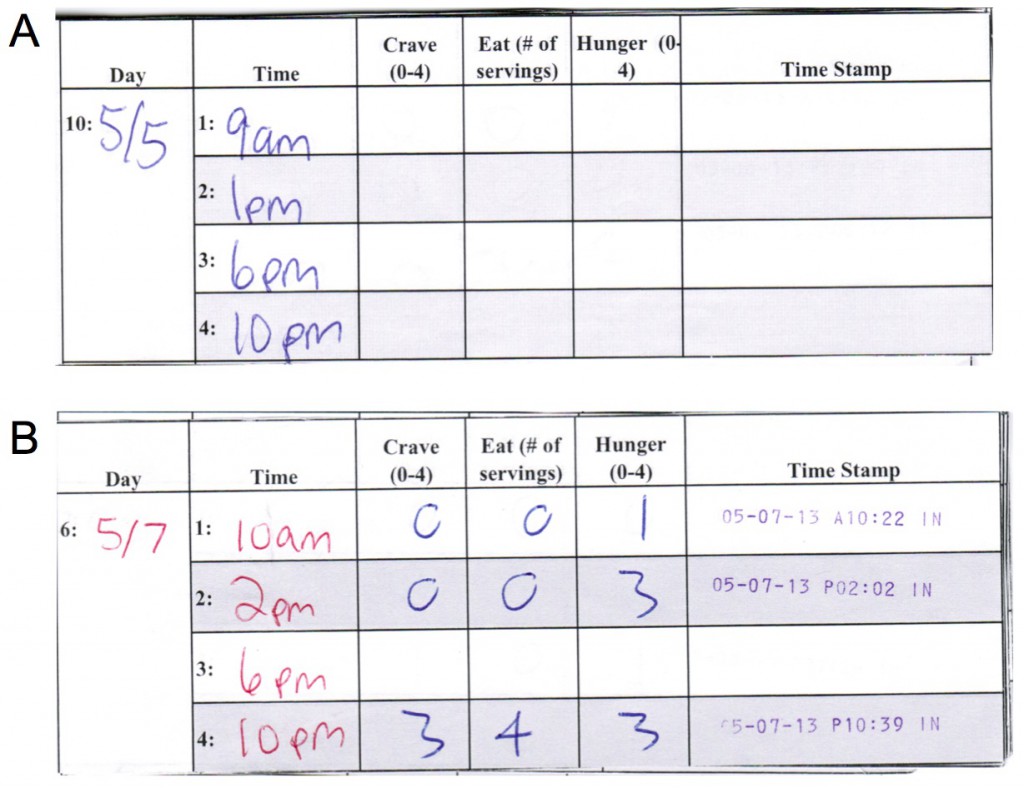It is becoming increasingly common for researchers to use text messaging to measure everyday thoughts, feelings, and behaviors because of its low cost and people’s generally high levels of familiarity and comfort with the technology. Another key advantage of text messaging is its ability to measure time-sensitive variables such as cravings (for food or other substances) and hunger. Despite these advantages, there have been very few studies that systematically compare text messaging to alternative ways to measure those variables such as paper-and-pencil diaries. As such, text messaging remains a promising though (as yet) unevaluated technique to measure everyday experiences.
Because of our curiosity about eating behavior (among other everyday goals), we were particularly interested to confirm our hunch that text messaging would be a superior way to measure eating-related variables (intake, craving, etc) compared to older techniques for accomplishing the same task. In particular, we focused on paper-and-pencil diaries, which are quite common in the literature both historically and presently. In this study, we assigned participants to report on their food craving, food intake, and general hunger four times each day for two weeks using either text messaging (with our partner mProve Health) or using traditional paper-and-pencil diaries (see example below).
Our main dependent measures were response rate, or how many responses were registered out of the 56 opportunities, and response latency, or how quickly after the targeted time did the participant respond. For example, a participant who responded 3 out of 4 times on a day would have a response rate of 75%, and a response that came at 2:02pm for a targeted time of 2:00pm would have a response latency of 2 minutes.
Our results were decisive: participants using the paper-and-pencil method had a response rate of 70%–pretty good, all things considered–but the response rate for participants in the text messaging condition was 96%. The response latencies were also shorter in the text messaging group (about 29 minutes after the targeted time on average) compared to the paper-and-pencil group (79 minutes after the targeted time on average). Interestingly, the absolute correlation of the response rate and latency with body mass index (BMI) was higher in the paper-and-pencil group than the text messaging group, suggesting that some of the subject-to-subject variability in responses in paper-and-pencil studies might be systematic (as a function of BMI in this case), but that text messaging reduces this form of variability.

Latencies in the paper-and-pencil group (black) and the text messaging group (white). The mean latency with respect to the targeted response time was far shorter in the text group (29 min) than it was in the paper-and-pencil group (79 min).
What we make of these findings is simple: text messaging makes it easier for participants to respond, so they respond more often and in a more timely way. We’re really happy about these findings because they establish text messaging as a valid way to help researchers get larger amounts of high-quality data on time-sensitive experiences such as food cravings.
My co-authors on this study were Nicole Giuliani and Alicia Pruitt.
Citation info: Berkman, E.T., Giuliani, N.R., & Pruitt, A.K. (2014). Comparison of text messaging and pencil-and-paper for ecological momentary assessment of food craving and intake. Appetite, 81, 131-137. [pdf]

